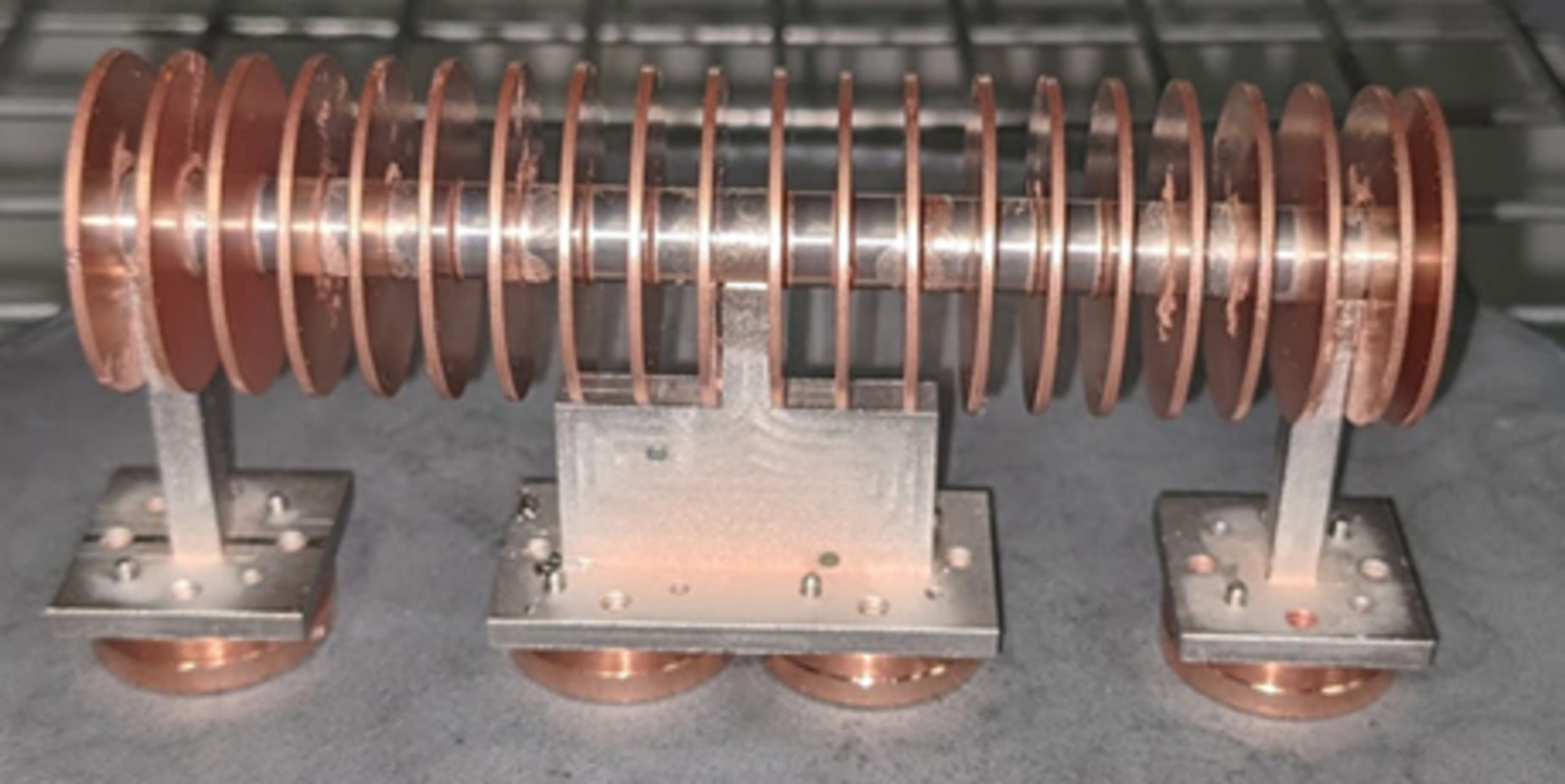High Power W-Band Traveling Wave Tube
The W band of the microwave part of the electromagnetic spectrum ranges from 75 to 110 GHz and is used for satellite communications and tracking services. But currently no operational W-band satellite communication system has been developed.
As W-band can be considered a frontier for space telecommunication applications the development of high power devices for the final amplification stage is critical to manage the trade-off between power efficiency, spectral efficiency and robustness against link distortions. An activity with the University of Strathclyde, UK and TDE has developed a high-power W-band traveling wave tube and tested its RF performance.
Various options were considered for the interaction waveguide. Helix and related technology were discounted since it was felt that the sizes were already extremely challenging in the Ka band, and scaling to significantly higher frequency was unattractive. Coupled cavity type approaches were considered but would not be consistent with the ESA targets for bandwidth required for communication applications and would likely be difficult to machine and join the delicate detailed structures at such high frequency.
A range of alternative schemes were therefore considered. Metamaterials show promise as do a range of interdigital and comb schemes – however these are relatively undeveloped and brought high risk for a number of different reasons. Folded waveguide methods seemed likely to offer the power and bandwidth required for the communications applications and therefore work focused on this method. It brings the attractive feature of allowing machining in two halves using precision milling – this could eliminate aspects of the uncertainty which tends to impact helix type designs, in unit to unit reproducibility since it would remove one aspect dependent on skilled artisan work – the build of the delay line. The activity designed a folded waveguide structure, manufactured it by micro-milling the two halves and diffusion bonding them together before setting up a test bench for W-Band cold test measurements. Currently, the activity is not capable of producing a tight vacuum in the tube (it leaks at the braze joins between waveguide tapers and tube body and at the windows.) There are now several forward phases plannes, including resolving the braze issues and eventually building a space launch prototype.


